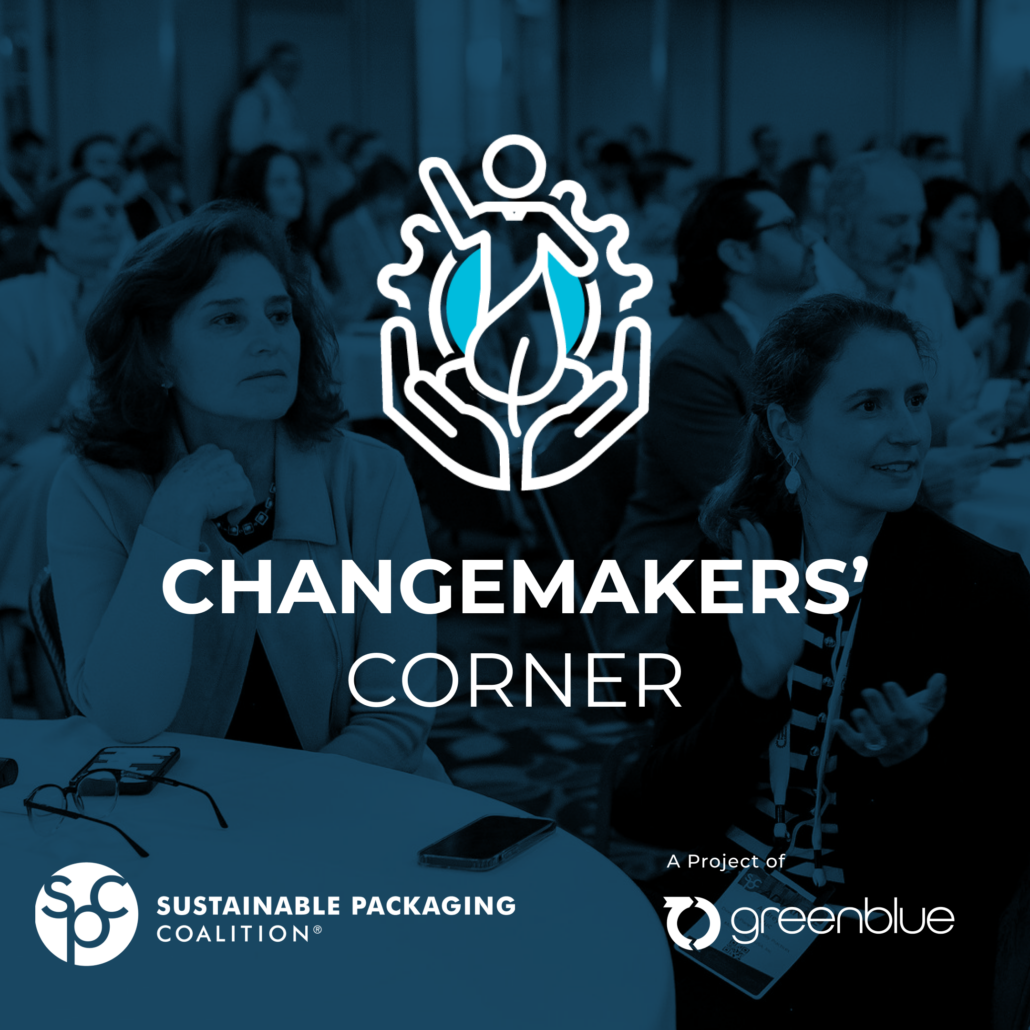SPC Impact 2023 opened with an afternoon series of sessions dedicated to life cycle assessment (LCA) and its use in sustainable packaging design and evaluation. Drs. Milena Rangelov from Watershed and Mariya Absar from Quantis and Alison Crawley from Trayak shared insights into LCA findings, best practices in International Organization for Standardization (ISO) compliance, and what metrics to look for alongside LCA when making holistic sustainable packaging decisions.
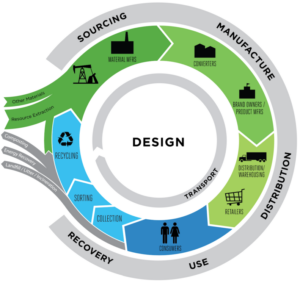
A Brief Review of LCA
LCA is the established methodology for evaluating the environmental impacts of a product or service over its life cycle. While the life cycle can be segmented into different sections, the methodology is at its strongest when it includes as many segments as possible.
Traditional models of a life cycle include; cradle to gate: which measures manufacturing impacts, cradle to grave: which measures manufacturing through the distribution, retail, use, and end-of-life phases, or cradle to cradle: which adds the impacts of recovering materials into future life cycles.
How is LCA used in developing sustainable packaging?
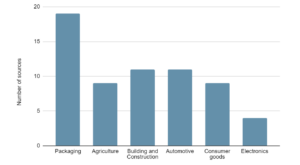
Data provided by Dr. Milena Rangelow’s SPC Impact presentation
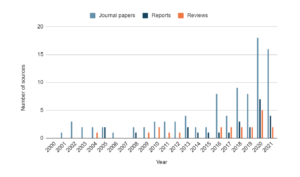
Data provided by Dr. Milena Rangelow’s SPC Impact presentation
One of the most valuable attributes of LCA is the ability to objectively evaluate material alternatives. Frequently that results in comparisons of plastics to non-plastic alternatives. Dr. Ranglov’s presentation focused on presenting a summary of the results from a comprehensive review of plastic conducted by Vital Metrics. The review included 144 papers published between 2000-2021.
Packaging was the most prevalent of the industries represented. While other sectors were included, due to the audience of SPC, this review will only present the packaging results.
The results indicated that packaging was the largest consumer of non-fiber primary plastic materials and that it was also the sector with the shortest product use cycles. While other industries use plastic, the ephemeral nature of packaging makes its impacts very different from the impacts of plastic in durable applications.
The factors revealed to be most important to include in LCAs assessing plastics in packaging are use pattern, weight, geographical context, and waste management practices. Likewise, the impact categories included in the evaluation in the LCA are important to the ultimate results and conclusions of the studies. Some gaps that were identified were the inclusion of additives in the assessments, the impacts of microplastics and plastic leakage, and the availability of high-quality regional data on production and end-of-life in geographies outside of Europe and North America.
Some advice on LCA best practice
In the session on ISO compliance, Crawley presented guidance on how to follow best practices in conducting and communicating LCA results. The presentation focused on ISO 14040: 2006 Environmental management – Life Cycle Assessment – Principles and Framework, ISO 14044: 2006 Environmental management – Life Cycle Assessment – Requirements and Guidelines, and ISO 14071:2014 Environmental management – Life Cycle Assessment – Critical review processes and reviewer competencies.
ISO compliance and the critical review process have key benefits. Critical review enhances the credibility of the LCA, improves understanding, pressure tests the LCA models, increases transparency, and supports comparative assertions to the public. However, it is also important to note that critical review does not certify the results of the LCA or result in the endorsement of one product over another.
Pushing sustainability goals forward
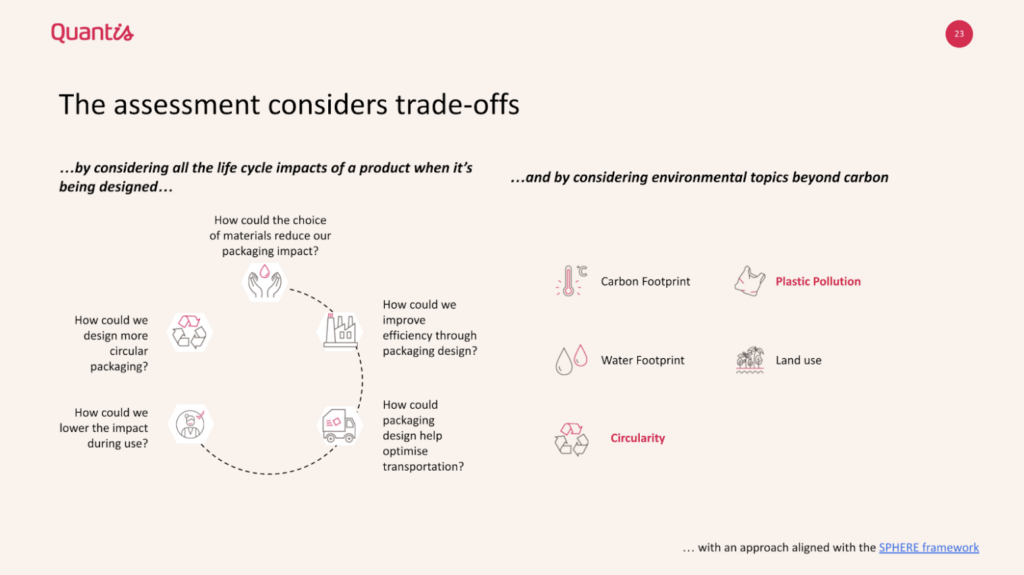
In response to some of the limitations of LCA, supplemental methodologies have been developed to use alongside LCA to aid in making more holistic packaging decisions. Moving beyond the carbon footprint tunnel vision was the focus of Dr. Absar’s presentation.
Holistic sustainability goals are metrics-based, multi-indicator, and context-specific. The key limitations noted by Dr. Absar to an LCA only approach included:
- Plastic leakage: a metric based on mismanaged waste in each market, which determines leakage into other environmental compartments
- Circularity score: Assesses the raw materials inputs i.e. virgin, renewable, or recycled content, and outputs, including recyclability, renewable content, and leakage
- Deforestation risk: Some bio-based plastics may contribute to deforestation and other resource depletion
- Recyclability score: Is the packaging designed to be recyclable?
Dr. Absar presented The SPHERE framework as a strategy for building upon traditional LCA to address these limitations, which can be applied to assess packaging from a portfolio perspective, or as an eco-design tool.
Life Cycle Assessment alone is not enough
It’s important to remember that sustainability includes environmental and social and economic impacts. LCA is a methodology for analyzing the environmental impacts of a product over its life cycle, rather than at a single point in time. While LCA is commonly used in the packaging industry to try to measure and quantify the environmental impacts of products, fundamentally, LCA is a measure of environmental impacts, not a measure of sustainability.
Sustainability is more than just these environmental impacts, however. Sustainable development is defined as meeting the needs of the present, without compromising the ability of future generations to meet their own needs. The broadness of this definition is the strength of the concept. Anything that prevents present and future generations from being able to meet their needs is unsustainable. While it is true that environmental issues, such as climate change, ocean plastic pollution, and deforestation all compromise the ability of future generations to meet their needs, social and economic factors do as well.
In addition to environmental impacts, there needs to be focus on social and economic justice for packaging to truly be sustainable. Sustainability teams need to be literate in methods for tracking and measuring progress in social and socio-economic impact categories as well as environmental impact categories. Other tools, such as Product Social Impact Assessment, can and should be used alongside LCA to avoid unintended social consequences in pursuit of lower environmental impacts.




